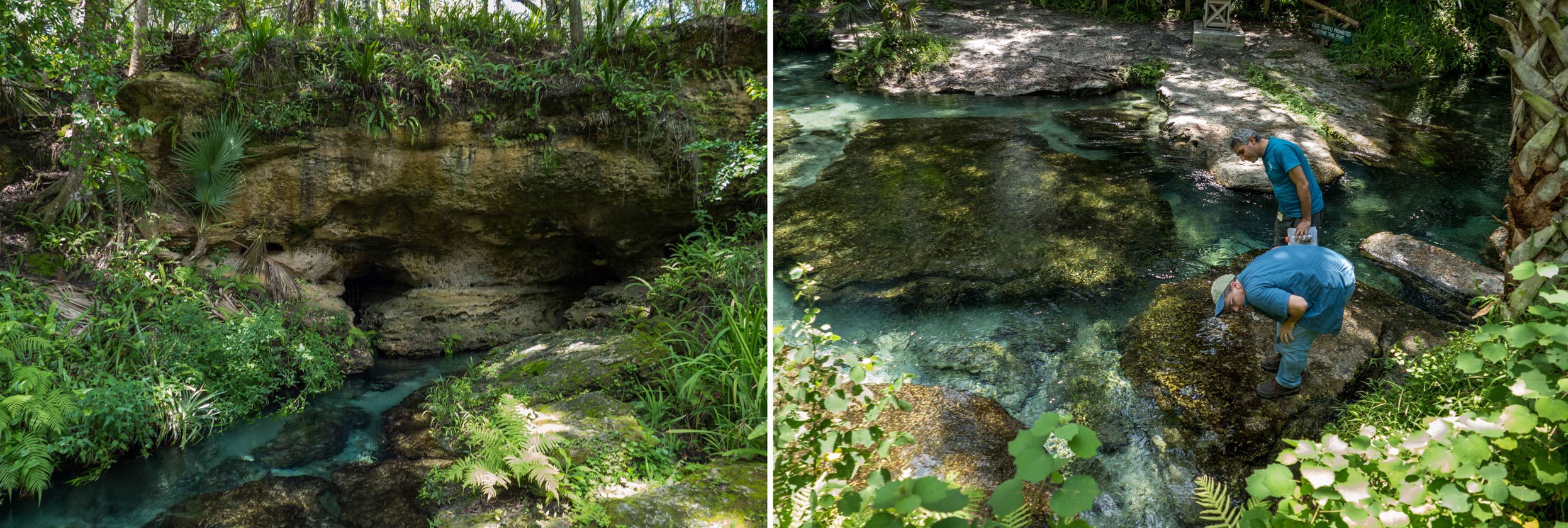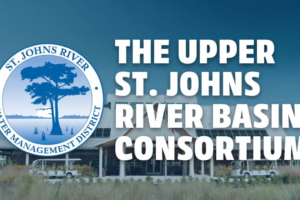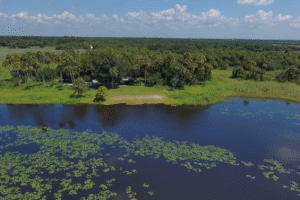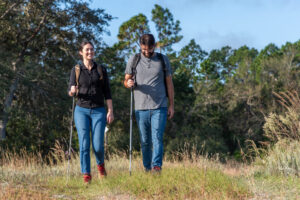District’s work to protect springs continues as we recognize Springs Protection Awareness Month
April 7, 2022
District staff (right) visit Rock Springs as part of their work. Rock Springs, in Orange County, is one of the eight Outstanding Florida Springs in the District.
Florida’s springs have captured the imagination of explorers, nature-lovers, dreamers, artists, songwriters and cinematographers for generations. The Sunshine State has one of the largest concentrations of freshwater springs on Earth — more than 700. Within the St. Johns River Water Management District’s 18 counties, there are 148 known springs.
Springs provide natural, recreational and economic benefits in Florida. Spring water supplies the base flow for many rivers and streams and habitat for wildlife and fish. These “windows into the aquifer” are at the center of the April celebration of Springs Protection Awareness Month. As part of our core missions work, the District and its Governing Board recognize Springs Protection Awareness Month annually and through our year-round work.
The District has worked with other agencies for many years to increase knowledge and understanding about the region’s springs, while also working to protect them, guided by the very latest science. Our water supply planning process and many of our cost-share projects and District-led projects are focused on springs protection.
The Central Springs/East Coast (CSEC) Regional Water Supply Plan (RWSP) was approved by our Governing Board in February 2022. The plan identifies solutions to meet the current and future water use needs of the region and provides project options for communities to implement to meet future demand, while protecting the region’s natural resources. Identified projects range from aquifer recharge and potable reuse to alternative water supply sources like reclaimed, surface water and stormwater.
Through cost-share programs, the District has co-funded 154 projects to protect our Outstanding Florida Springs. Since 2014, the District has contributed approximately $58 million toward vital springs protection projects, resulting in nearly 100 million gallons per day (mgd) of groundwater withdrawal offsets through alternative water supply and water conservation. These projects have also reduced total nitrogen loading near priority spring systems by more than 1 million pounds per year and total phosphorus by 144,000 pounds per year.
An example of cost-share projects benefiting springs include utilizing alternative water supplies and improving the quality of treated wastewater. The city of Deltona is currently constructing the third phase of an alternative water supply project that will benefit water flow at Volusia Blue Spring. The project includes the construction of an intake structure at Lake Monroe, a pump station, and a transmission main from the intake structure to the existing Alexander Avenue Water Resources Facility. The completed project will provide 4 mgd of alternative water supply to supplement reclaimed water systems in western Volusia County and recharge the Upper Floridan aquifer.
In the Wekiwa-Rock springshed, Orange County Utilities has partnered with the District, the Florida Department of Environmental Protection, and local homeowners to abandon 367 septic tanks and connect to sanitary sewer. Phases 1 and 2 are underway and are part of a six-phased project to abandon nearly 1,500 septic tanks from 16 neighborhoods that are adjacent to the Wekiwa Springs State Park. Phases 1 and 2 will reduce nutrient loading within the springshed by over 3,000 lbs/yr total nitrogen.
The Agricultural community is also helping in the effort. Through our Agricultural Cost-share Program, a project at North Caledonia Farms north of Hawthorne is benefiting the Silver Springs springshed. The olive and sod farm recently completed a fertigation system project to “spoon feed” liquid fertilizer to the plants instead of relying on granular fertilizer that can wash away in heavy rains (helping to improve water quality) and they converted to a drip irrigation system on their olives for water conservation.






